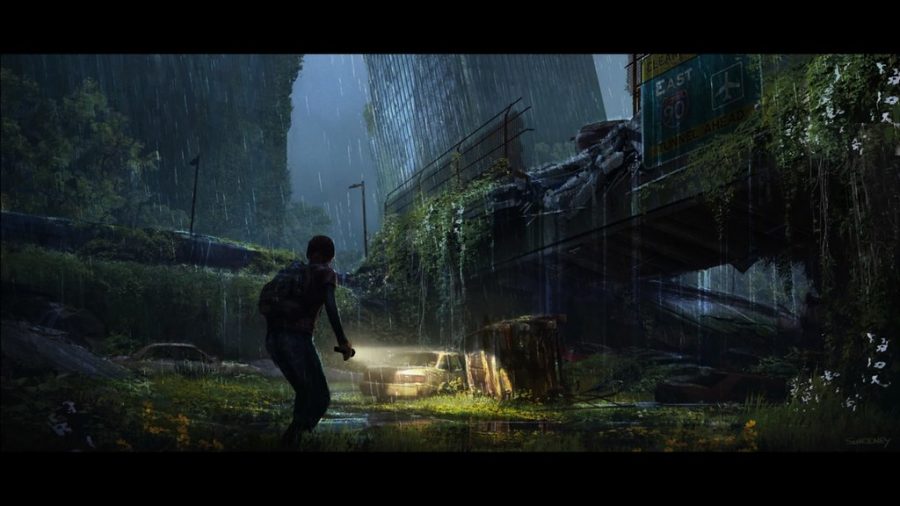Video Games: A New Yet Traditional Art Form
August 26, 2019
Although they’re often overlooked, video games are more important than ever. These days video games are finally gaining the respect they’ve always deserved as an art form. Defining what art is can be dependent on several factors, and they are often subjective. Video games may best be defined as art because of their storytelling abilities and its interactive interface.
Digital art is a broad category of shared mediums that include modern art, typography or hypermedia, digital imaging, technological art and animation. This is where video games fit. They reflect and share digital art due to their range of simulation linked to story narratives. Within the narratives, video games’ graphics help to bring a story to life through the creation of a 3D visual world where users can interact within their environments.
Artwork requires an audience to appreciate or participate and games share principle because they give an interactive experience. Many games, such as online multiplayer games, require cooperative relationships in order to play, progress and win. Another characteristic shared between games and digital art is role-playing. In order to accomplish this, graphics in games have been able to make a more personable experience for users by creating their own visual representations and by focusing on player communities.
The Online World

Community-based Massively Multiplayer Online Role-Play Games (MMORPGs) feature a massive playing field for gamers to interact with others throughout the real world in an online 3D world. In these games, players are able to see a world unlike their own, whether it’s a bright mystical style of “World of Warcraft” or a more realistic fantasy game such as the medieval age in “Elder Scrolls Online.” In Dr. Alf Seegert’s course “Video Game Storytelling” at the University of Utah, he mentions a young man in a different country played “World of Warcraft” because it was the only way he was able to see what forests and lakes looked like. The visual representation of a world gives others a new sense of seeing and being. Since MMORPGs are online, players build communities who cooperate to take on certain tasks such as taking down a particular enemy, trading or even simulating real life in marriages and building houses.
Art Styles in Games
Thatgamecompany’s independent game “Journey” uses only visual and musical aesthetics as well as playful interactivity between the player and non-player characters (NPCs) to tell a story with few words. Many works, using both traditional and electronic mediums, are considered art. These are created in order to express something or tell a story. “Journey” is a parable for the hero’s journey, when an individual is called to go on a journey while overcoming obstacles to ultimately grow as a person.
There are different ways in which a story can be told. Games like Naughty Dog’s “The Last of Us” and Mike Bithell’s “Thomas Was Alone” use ludonarrative — a study of games and narration — in order to balance gameplay and storytelling. Developers use cutscenes and dialogue in “The Last of Us” during peaceful gameplay in order to carry the narration along while never taking away from the astoundingly realistic digital graphics, eerie creatures and thrilling gameplay. “Thomas Was Alone,” on the other hand, used very simple shapes as characters in simple levels. While the narrator informed the player of the characters’ thoughts and their dialogue interactions, levels were designed in order to suit each character’s shape and ability. In both examples, narration aided in enhancing the visuals and aesthetics for the player as they interact with and react to their environment.

On the other hand, games like Nintendo’s “The Legend of Zelda: Breath of the Wild,” “The Legend of Zelda: The Wind Waker” and “The Legend of Zelda: Twilight Princess” use art styles in order to win over their audience in a predictable storyline. All of the games are in the same series featuring a playable young man who has to go on a quest to save the princess Zelda by defeating a form of enemy Ganon. Simplicity doesn’t strike true in these almost limitless adventures. The art styles vary tremendously in every game in the series as the developer tried to bring something new to the table each round. “The Legend of Zelda: Twilight Princess” used dark undertones in its character palettes and had the surrounding environment randomly generate as the player traverses its world. “The Legend of Zelda: The Wind Waker” was differentiated by a vast world of water with little land. The newest game, “The Legend of Zelda: Breath of the Wild,” styles a 3D world with 2D-looking shading, shapes and colors. This game also offers the player more open world experience in a traditionally more linear type game.
New Ways of Interaction and Display
Games have evolved to continuously give players more each year. The industry has taken great strides towards better graphics. Virtual Reality is a new scope in the gaming world which allows players to see game graphics and interact with them in a whole new light. Jeff Jackman, an artist and game designer for Parallel Plaid — a Salt Lake City indie game studio — agrees that video games are striving in ways that can now be compared to other established art mediums and how VR may pave the way forward. “[Though], we are just seeing the beginning of how games can be used.”
A big step in their progress is having them on display in museums as a respected form of art alongside traditional and modern works. A project held at the Natural History Museum in Utah features a fun game that teaches how different mice species are affected by and interact with their environment. The game is called “Of Mice and Meadows” and can be located in the Land Gallery. Jackman believes that “games can add an interactive feature that all other [mediums] lack” by giving a more personal involvement between artist and audience.
VR can bring a whole new experience to exhibits in order to thin the gap of understanding between those making a display for a purpose and those who are viewing the display. Jackman adds “VR and AR are bringing new ways to work and interact. [Games] could be in a digital museum [where] people could walk around in VR and view them.”
Video games have made more than a name for themselves in the digital world as an art medium. Whether they’re displayed in traditional means such as a museum or appreciated through a console or online, video games have become a means for engagement and experiencing a work of art. Art is continuously evolving to reflect the change with our society and technology. Video games are no exception to this, but are thoroughly intertwined with art.







